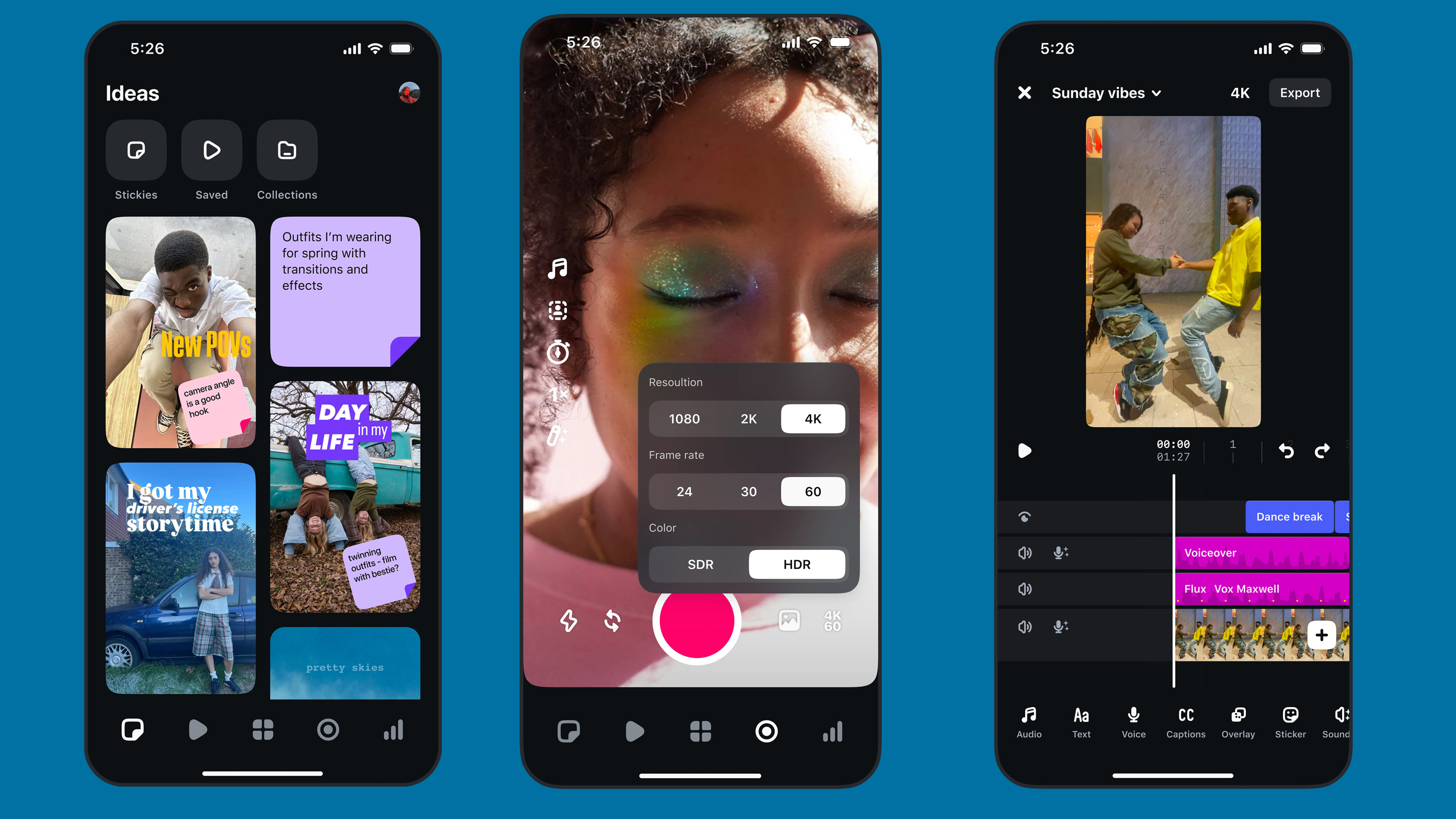Entering the Flow State with the LUMIX S5IIX – part two: Bikes
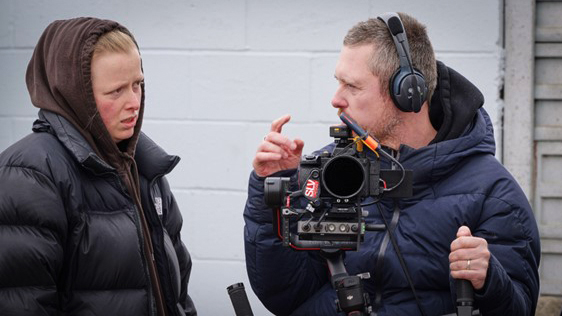
I think a flow state is what you achieve when you are on set and you have great communication with all the people you are working with. I guess everyone can describe a flow state in a different way, but to me it's the moment where you are all there creating the same project and you feel totally in sync with one another, which I think comes easier the more you know people and the more you communicate.
- Charlotte Regan, Director of Bikes
Have you ever been so focused on a task that you lose track of time and everything else around you? You’ve entered the flow state, a condition of peak performance and creativity that every artist and filmmaker strives for. The last thing you need when you’re in that zone is to be confronted with the limitations of your equipment or budget.
With this concept in mind, Panasonic has created the Flow State series, a unique collection of short films produced by talented filmmakers from around the globe. The idea is to showcase the potential of the LUMIX S5IIX camera to overcome the limitations suffered by other cameras, allowing you to simply enter your flow state and bring your creative vision to life.
Here are just a few of the features that will help artists unleash their creativity with the LUMIX S5IIX:
- All-black design with 24.2MP full-frame sensor for stunning image quality and excellent color science
- Fast and reliable autofocus performance featuring Phase Hybrid AF
- Powerful image stabilization with Active I.S. technology
- C4K 60p/50p 4:2:2 10-bit unlimited recording and 6K 30p/25p 4:2:0 10-bit recording for professional quality video, as well as FHD 120fps HFR
- 6K Open Gate to enable flexible framing for any social media platform
- Raw video recording in ProRes RAW or Blackmagic RAW to an external recorder over HDMI
- 14+ stop V-Log/V-Gamut for high dynamic range and Dual Native ISO
- Low compression video capabilities with formats such as ProRes 422 HQ or All-Intra with USB-SSD support
- Wired/wireless IP streaming
Bikes is the second release in the Flow State project and was filmed in London, United Kingdom. This short film shows the story of two young people who share a brief moment together and realize that they could potentially have a great connection, but aren't quite sure how to get there. Continue reading to hear from the makers of this touching film about where the inspiration for the story came from and how the LUMIX S5IIX played a role in bringing the artist’s vision to life.
Here are just a few of the features that will help artists unleash their creativity with the LUMIX S5IIX:
Interview with Creators of Bikes
The following is an interview with Charlotte Regan, the film’s writer and director, and Franklin Dow, the film’s cinematographer.
Jude Watkinson (Interviewer): Tell me about your inspiration for this film.
Charlotte: The inspiration for Bikes was those really small unacknowledged moments we have with strangers, whether that's on the street or on a bus or on a train. It's like the brief moments where you make eye contact or notice that someone is listening to the same music as you or interested in the same thing as you. And it's kind of about what would happen if those connections were explored further or if we were more willing to reach out to people.
Jude: What artistic challenge did you want to undertake through this project?
Charlotte: Artistically, I think we were kind of looking to challenge ourselves, and myself and Franklin were looking at how we could create a language with cinematography because there's no dialogue and it's very loose on plot. Everything felt like it relied on the shots we chose to do or the really subtle performances that the actors decided to give. So we were kind of challenging ourselves in that regard. Both me and Franklin are very used to dialogue heavy films or films where it's very handheld and you don't think about the shots, but it's much more about the characters and the plot as well. With this short film, the shots felt as important as the characters.
Jude: So how did the LUMIX S5IIX help you tell your story visually?
Charlotte: The LUMIX S5IIX was really invaluable. I don't think we could have shot it on another camera, because both of the characters are on pedal Bikes and are on really small kind of narrow roads in and around London, so it meant that we kind of needed to be really compact and get into small spaces to get those kinds of intentional shots we wanted or the quite fast moving shots where the young people were on their Bikes and we were following with them. So the LUMIX was the perfect camera to get up, run around and go. It meant we could have a small camera team, which meant we were super flexible. So if we spotted a great shot or great location that we wanted to use, we could quickly run over and capture something, which I don't think we would've got with a traditional setup and number of crew. It meant we could be really compact and get shots that we wouldn't have been able to get other ways for sure.
Franklin: It was really nice working with this camera. I'd say it helped us tell the story visually because of the form factor of it, we were able to run it on a smaller gimbal and be a bit more nimble with it. We wanted to keep the camera very much with Billy, our character Billy, in a sense of proximity, I suppose. So we always kind of feel like we're with her on this little journey. And I think the form factor of it helped with that. I suppose it also helped us when we shoot out on the street, and so you're a bit less conspicuous with a smaller crew and a smaller camera setup.
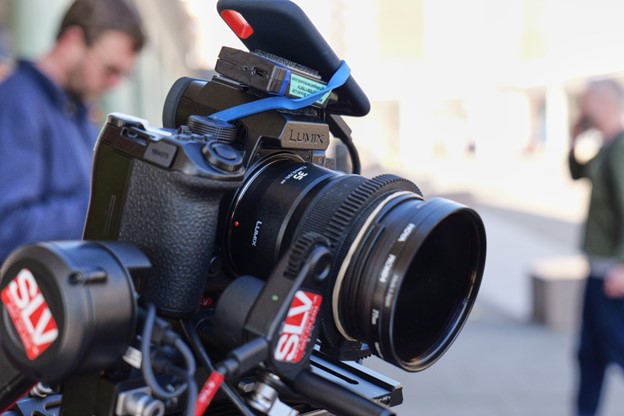
Jude: What was the recording format you used with the LUMIX S5IIX?
Charlotte: So, we used an external SSD drive via a USB-C cable and recorded in Apple ProRes 4:2:2 HQ. The image quality felt like it paralleled the much higher budget cameras that we used for other projects. When we got to the edit, me and the editor kind of commented on the image quality and how similar it was to other projects we'd shot recently. You couldn't really tell the difference. It was super, super sharp, but not in an overly digital way. It had a really cinematic look to it, which suited the way we wanted to shoot the project. It very much felt like it had the benefits of a DSLR kind of camera but with a cinematic image quality.
Jude: The name of this project is Flow State. Artists usually experience the state of mind when they're highly focused and they feel most creative and authentic to their inner voice. Do you often experience flow state?
Charlotte: Yeah,I think a flow state is what you achieve when you are on set and you have great communication with all the people you are working with. I guess everyone can describe a flow state in a different way, but to me it's the moment where you are all there creating the same project and you feel totally in sync with one another, which I think comes easier the more you know people and the more you communicate. So on this project, the moments I felt like I had it, were on set when me and Franklin would communicate about a shot that we hadn't necessarily planned or storyboarded, but that we saw across the street and were like, oh, we just have to get it. I guess because me and Franklin, the cinematographer, have a great relationship and I've worked together on different projects. It always feels like we are very much in sync and that feels like a flow state, I suppose.
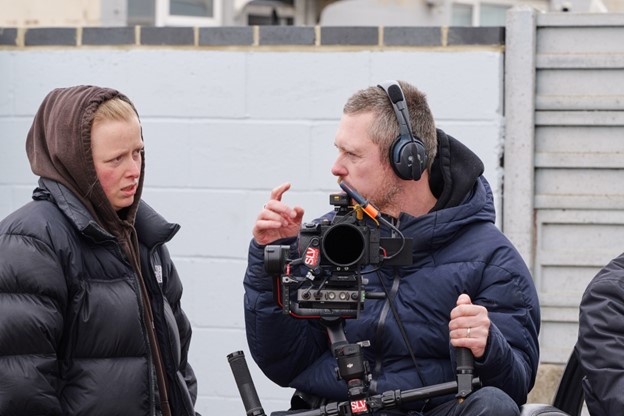
Jude: Franklin, what do you like about the S5IIX when you're filming?
Franklin: It's been amazing. I have to say, I was really impressed with the picture quality of the camera. I was impressed with the lack of rolling shutter, because that's often an issue with smaller cameras. With those other cameras if you pan quickly, you get skewed lines. And this obviously has a pretty fast read-out, but I wasn't suffering from too much rolling shutter, which for this particular film would have been an issue, because we were doing some quite fast tracking along with the Bikes and stuff like that. So that was really good. And as I said, it just rendered the colors really naturally, which was nice. Not something you always get with a camera of this scale.
Jude: Which lenses did you use for filming mostly?
Franklin: We had a range of lenses. We had a set of the LUMIX S Primes and we had a couple of Sigma zoom lenses as well. We didn't really stick to one particular lens. We used the Primes quite a lot with the camera on a gimbal. I enjoyed using the LUMIX S Primes. They were fast and sharp, as you'd expect for a modern lens. They're also quite similar in size and weight, so when you use them with a gimbal it's very easy to switch between lenses without having to spend too much time moving things around. So from a technical point of view, that's very useful. They also rendered very nicely.
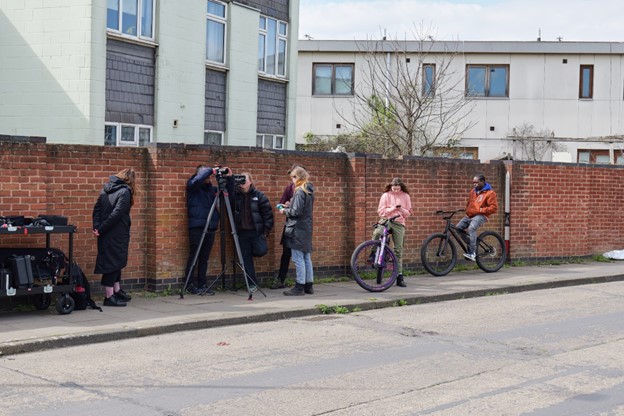
Jude: What do you think something that the S5IIX can do that larger format cameras can't?
Franklin: Firstly, it's more accessible just simply because of the cost. Secondly, it's a small camera. You can get it into places you can't get a larger camera physically. You can rig it using much lighter weight equipment. Really, that's what it gives us, as professionals, over a larger format camera. And, as I said, because it does give you an image quality that is very, very close to that of a camera that costs 20 or 30 times as much, it democratizes filmmaking in a way, makes it more accessible to people.
Jude: If you could reach millions of filmmakers, what do you want to say to inspire them?
Franklin: I would say that if you are an aspiring filmmaker, the best thing you can do is get out and make films and the accessibility now with the equipment has made that a lot easier. You can get software that you can cut, color, sound mix to a professional level for free. Your cameras are accessible now. And really the best way of learning how to make films is by making films. There's an alchemy to filmmaking which is what makes it such an enjoyable thing to do. It's almost an unmasterable art. But what you do get through practice is a fluency of film language, as well as an understanding of how to bend and break the rules and what affects those. So my advice is to find like-minded people who want to make films, it's a team game, and get out there and shoot stuff, experiment and see what you can do.
Jude: Charlotte, I heard that you like street casting and casting non-professional actors. What do you like about approaching and working with them? Can you tell me about the casting process for Bikes?
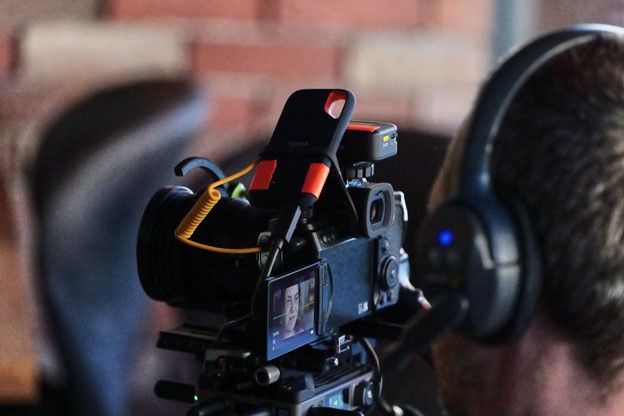
Charlotte: I love the energy that we get on set with that approach. We all kind of get to realize what a cool job we're doing as that’s the perspective that lots of young people who haven’t had much time on set approach a job with. It makes the entire crew kind of take on that joy. With Bikes, our casting director Michelle Giovanni reached out to loads of social media platforms that could reach those kinds of young people. We needed people that were incredible on their bikes. She got those guys to tape and as soon as we saw Nida and Reuben we kind of knew they were magic. They both had so much charisma even on a brief self-tape.
Jude: Do you think the S5IIX helped non-professional actors perform more naturally in some ways?
Charlotte: The camera definitely helped. It was non-intrusive and meant we could approach the shoot in a very natural, almost documentary-like way. It wasn’t a big scary camera with tons of crew. We could hide out of sight or stay out of the way of the cast who needed space with their bikes. It helped with the biking shots massively. But beyond that I think it really helped with their performance. Even things like the auto focus feature meant we didn’t have to overly block or tell the cast to hit marks.
Jude: With the S5IIX, do you think you can make films on your own?
Charlotte: Yes, absolutely. I am not the most technical person but I felt I got a slight understanding of the camera on set while chatting with Franklin. It felt so user friendly. I am actually planning to use it to self shoot two documentaries over the summer because of how simple it was to use and the incredible picture quality it got. It just really opens doors to having much smaller, less intrusive shoots and with documentary films or films with non-professional actors I think that’s the key to getting brilliant performances.
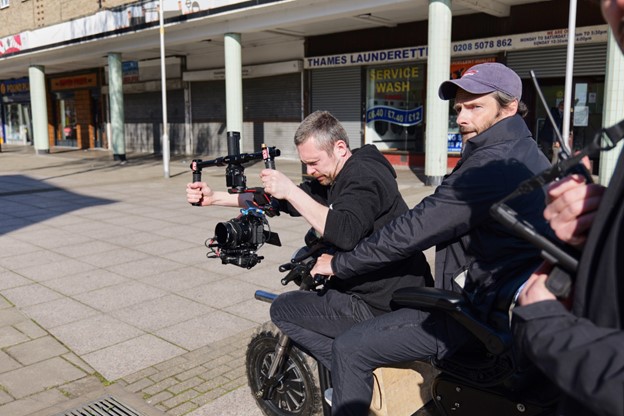
Ready to Enter Your Flow State?
The new LUMIX S5IIX is designed to help filmmakers overcome the limitations presented by other cameras, enable them to enter their flow state and ultimately bring their artistic visions to life. In order to demonstrate the potential that the S5IIX offers to filmmakers, Panasonic has launched the Flow State project of short films with the hope that it can act as a platform for talented filmmakers from around the world to showcase their abilities using this groundbreaking camera.
If you’d like to see the full short film Bike and learn more about the Flow State project, please follow this link.
To find out more about LUMIX S5IIX, visit LUMIX UK and visit LUMIX US.
Get the Digital Camera World Newsletter
The best camera deals, reviews, product advice, and unmissable photography news, direct to your inbox!
Digital Camera World is one of the leading authorities on camera and photography news, reviews, techniques, tutorials, comparisons, deals and industry analysis. The site doesn't just specialize in cameras, but all aspects of photography, videography and imaging – including camera phones, gimbals, lenses, lighting, editing software, filters, tripods, laptops, printers, photo books, desks, binoculars and more.
Whether you're using, looking to buy or trying to get the most out of a compact camera, action camera, camera drone, cinema camera, beginner camera or professional camera, Digital Camera World has a roster of experts with combined experience of over 100 years when it comes to cameras, photography and imaging.



